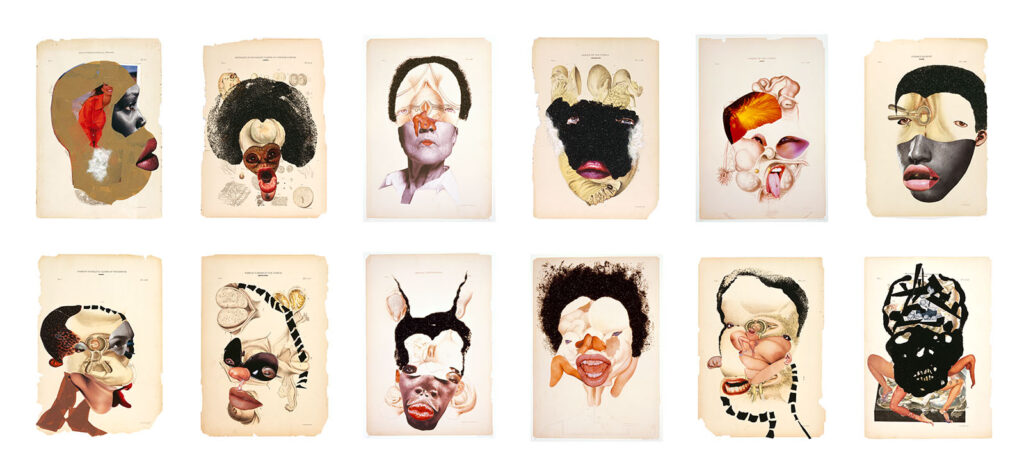The Gut / Der Darm

The Gut / Der Darm Anetta Mona Chisa & Lucia Tkacova public sculpture, Schillerplatz, Chemnitz (part of the project Gegenwarten | Presences), photographed by the artist – The Gut is the organ that renders Marx’s body in the city that holds the largest sculpture of Marx’s head in the world – Karl-Marx-Monument. The actual head […]
Henry Gray (anatomist) and Henry Vandyke Carter (artist), Fig. 1005, Superior and inferior duodenal fossæ.

Henry Gray (anatomist) and Henry Vandyke Carter (artist), Fig. 1005, Superior and inferior duodenal fossæ. Gray’s Anatomy Descriptive and Applied. A New American Edition (1913), p. 1265.Private collection: Nina Sellars. Photographer: Nina Sellars. – Giving thoughtful attention to the physical qualities of the classical anatomical atlases brings our awareness not only to their content and […]
Wangechi Mutu, Histology of the Different Classes of Uterine Tumors (12 works) (2004–05)

Wangechi Mutu, Histology of the Different Classes of Uterine Tumors (12 works) (2004–05) Series of twelve collages on found printed medical illustrations, including printed paper, glitter, ink, adhesive tape and fur. © Wangechi Mutu. Courtesy of the artist – Wangechi Mutu works expansively across sculpture, film, collage, performance, drawing, and painting. In dialogue with Afrofuturism, […]
Mary Reid Kelley with Patrick Kelley, This is Offal (2015)

Mary Reid Kelley with Patrick Kelley, This is Offal (2015) Live performance streamed via internet, 8 min., Tate Modern, November 19, 2015; Photo credit: Patrick Kelley. Courtesy of the artists A video of the performance is available here – Mary Reid Kelley works at the boundary between performance, painting, and poetry. She crafts vivid, layered […]
Side entanglements on Flax

Side entanglements on Flax Hayv Kahraman Side entanglements on Flax, 2022 Oil and ink on flax Unframed: 91.4 × 39.4 cm 36 × 15 1/2 in Framed: 98.5 × 45.6 × 4 cm 38 3/4 × 18 × 1 5/8 in (KAHR 2021035) Read the History
NeuroBust no.5

NeuroBust no.5 Hayv Kahraman NeuroBust no.5, 2022 Oil on linen 88.9 × 88.9 cm 35 × 35 in (KAHR 2022004) Read the History
Torshi and eyes

Torshi and eyes Hayv Kahraman Torshi and eyes, 2022 Oil and torshi on linen 127 × 127 cm 50 × 50 in (KAHR 2022006) Read the History
Entanglements with torshi no.2

Entanglements with torshi no. 2 Hayv Kahraman Entanglements with torshi no.2, 2022 Oil and torshi on linen 177.8 × 177.8 cm 70 × 70 in (KAHR 2022003) Read the History
Brain Frog

Brain Frog Hayv Kahraman Brain Frog, 2022 Oil on panel 203.2 × 203.2 cm 80 × 80 in (KAHR 2022001) Read the History
3D Model Embedded in the Greco-Roman Anatomical Atlas

3D Model Embedded in the Greco-Roman Anatomical Atlas Copyright: ATLOMY (ERC StG GA 852550) Hebrew University of Jerusalem – Step into the Atlas and use it to explore the model and to learn about Aristotle’s ideas of the anatomy of the digestive system and about his anatomical terminology. You might recognize some terms! You will see […]
